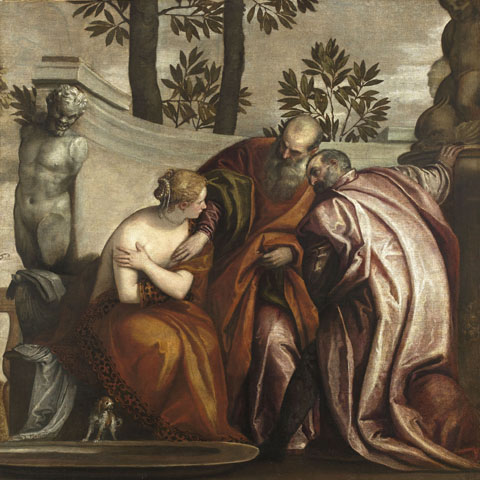Fr : version française / En: english version
mheu, Historical Museum of the Urban Environment
Susanna and the Elders
Paolo Caliari (Veronese)

16th century
oil on canvas
198cm x 198cm
Paris, Musée du Louvre
© RMN / Gérard Blot
View this work in the exhibition Bathing
The work
In his version of Susanna, Veronese depicts threatening, insistent elders making improper gestures. They are no longer just looking, they are acting. One of them slides his hand towards the woman's breast. And what is the other one doing, with his right hand resting on the fountain and his left... what is happening there? And the delightful faun, sculpted like a figurehead, observes the scene with a smile: indeed, it's not the little dog hidden under Susanna's skirt that will defend her virtue. Leaving the story aside, Veronese manages here to create various shades of yellowish and greenish grey tones rising up behind the reds and pinks of the garments, lending an unspeakable tinge of melancholy to the Venetian sky.
The artist
Paolo Caliari was born in Verona in 1528, from which he derived his nickname: Veronese. Yet despite his birthplace and moving late to Venice (probably in 1557), he is a true Venetian painter, one of the greatest exponents of what is termed the Late Renaissance, along with his two contemporaries Titian and Tintoretto. Like the latter, Veronese painted in a Mannerist style as opposed to the refined, masterful Classicist style that Titian still represented.
A supreme colorist, skilful at trompe-l'œil and a lover of architecture (his father was a stonecutter), Veronese excelled in grandiose scenes like The Wedding at Cana and The Feast in the House of Levi, for which he was cautioned by the Inquisition in 1573 for taking artistic license with religious dogma. Like Tintoretto, he painted quickly, but his practice of undercutting his fellow painters (working faster and more cheaply) earned him a bad reputation. He died in Venice in 1588.